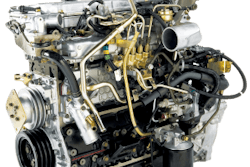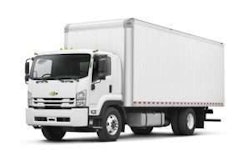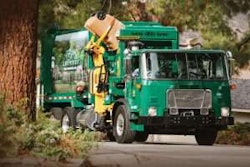
Three Volvo VNL 670 model tractors hauled cargo containers at the Los Angeles Port complex and along Interstate 110, highlighting for public officials and other stakeholders the technology’s potential for improving highway safety, reducing greenhouse gas emissions, and increasing the capacity of transportation systems.
“Truck platooning can benefit freight companies and professional drivers alike through safer, more fuel-efficient operations,” says Magnus Koeck, Volvo Trucks vice president of marketing and brand management. “Vehicle-to-vehicle communication is pivotal for platooning systems; it helps reduce the reaction time for braking and enables vehicles to follow closer. Reducing the traveling distance between vehicles not only reduces the aerodynamic drag, but also allows for greater highway utilization, thereby helping to alleviate traffic congestion.”
In simulated “real world” conditions the three Volvo VNL tractors traveled at speeds of 55 miles per hour while keeping 50 feet apart, a closer distance than usual for on-highway tractors. Forward-looking sensors and vehicle-to-vehicle communication helped maintain speed and spacing without driver intervention. Staged and unplanned vehicle cut-ins demonstrated how the technology handles common traffic situations, Volvo says.
CACC technology is an enhancement to the current Adaptive Cruise Control (ACC) technology that enables closer and more accurate control of the gap between trucks with increased safety. Volvo says the advanced technology, which makes platooning possible, is meant to serve as an aid, not a replacement for skilled professional truck drivers. Benefits of platooning through CACC include faster responses to hard braking while maintaining safety, superior longitudinal control while following in a lane, reduced emissions, and improved traffic flow.
The CACC technology being developed in conjunction with PATH has been sponsored by the U.S. Department of Transportation/Federal Highway Administration Advanced Research Program and Caltrans. Other project partners include Cambridge Systematics, Inc., the Los Angeles County Metropolitan Transportation Authority, and Gateway Cities Council of Governments.








